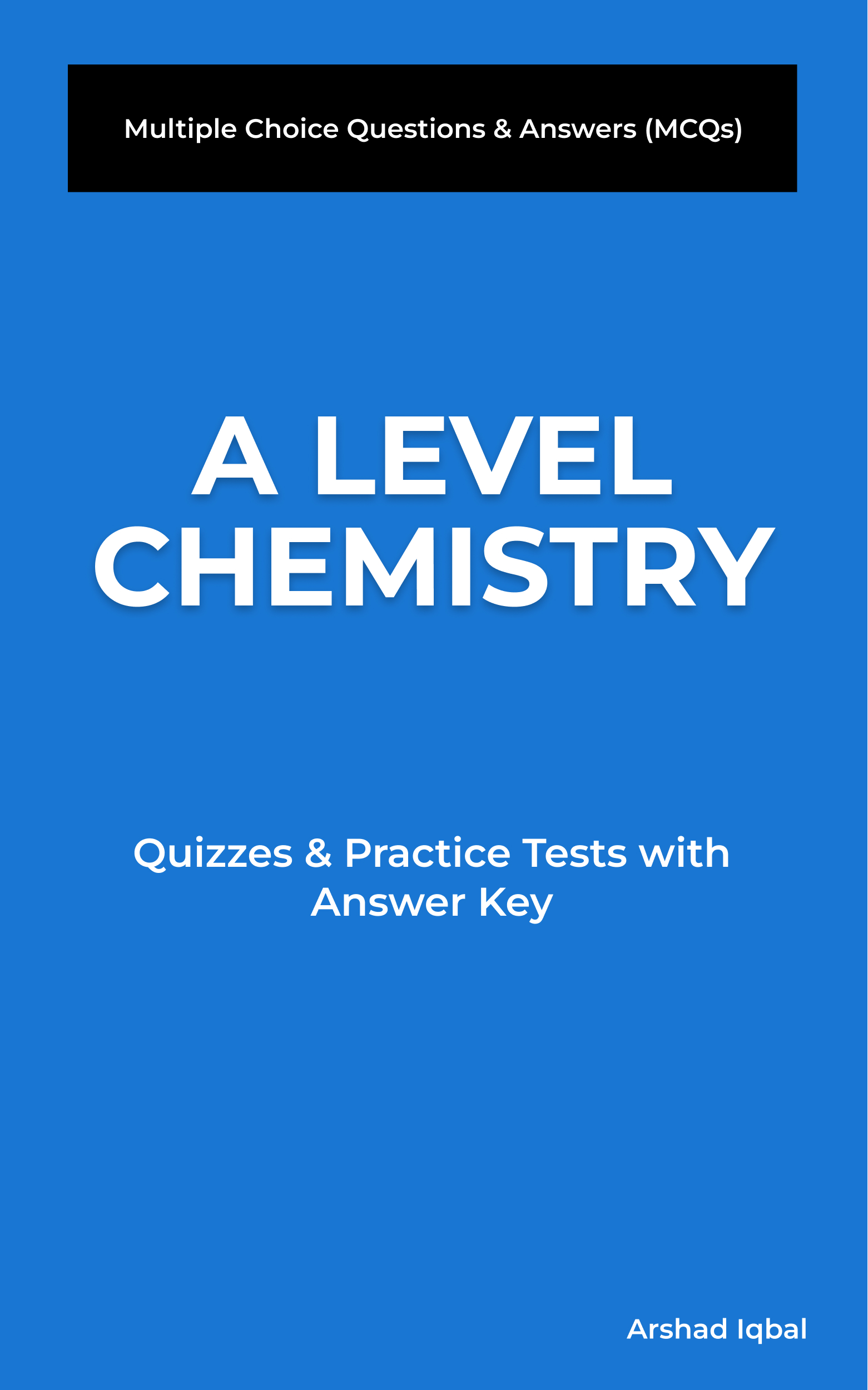IGCSE A Level Chemistry Practice Test 338
Van der Walls forces in Chemistry MCQs (Multiple Choice Questions) PDF Download | 338
The Van der Walls forces in Chemistry Multiple Choice Questions (MCQ) with Answers PDF (Van der Walls forces in Chemistry MCQs PDF e-Book) download Ch. 6-338 to learn IGCSE A Level Chemistry Practice Tests. Study Chemical Bonding quiz answers PDF, Van der Walls forces in Chemistry Multiple Choice Questions (MCQ Quiz) to learn IGCSE GCE certificate courses. The Van der Walls forces in Chemistry MCQs App Download: Free IGCSE A Level Chemistry App to learn van der walls forces in chemistry, bond energy and bond length, reactions of group ii elements, fluorine, uses of group ii elements test prep for GRE subject test tutoring.
The MCQs: A mole of liquid can be converted into a mole of gas by "Van der Walls forces in Chemistry" App (Android, iOS) with answers: increasing the catalyst, breaking the bond energy, decreasing catalyst, and reaching the enthalpy change of vaporization to learn IGCSE GCE certificate courses. Practice Chemical Bonding Questions and Answers, Google e-Book to download free sample for GRE subject tests.
Van der Walls forces in Chemistry MCQ with Answers PDF Download: Quiz 338
A mole of liquid can be converted into a mole of gas by
- breaking the bond energy
- increasing the catalyst
- reaching the enthalpy change of vaporization
- decreasing catalyst
A greater quantity of negative charge exists between two atomic nuclei in
- ionic bonds
- single covalent bonds
- double covalent bonds
- triple covalent bonds
Which statement is correct about Group-II metals who have attraction of high nuclear charge?
- it is because of the greater shielding effect
- it makes the loss of electrons impossible
- it is because of the distance from the nucleus
- it outweighs the attraction of higher nuclear charge
A fluorine atom (F) affects pair of an electron in a covalent bond, which is
- weakest
- strongest
- neutral
- constant
The process of decomposition of calcium carbonate (CaCO3) and formation of calcium oxide (CaO) and carbon dioxide (CO2) takes place in
- furnace
- factory
- industry
- lime kiln
IGCSE A Level Chemistry Exam Prep Tests
Van der Walls forces in Chemistry Learning App: Free Download Android & iOS
The App: Van der Walls forces in Chemistry MCQs App to learn Van der Walls forces in Chemistry Notes, A level Chemistry MCQ App, and 9th Grade Chemistry MCQs App. The "Van der Walls forces in Chemistry" App to Free Download A level Chemistry MCQ Apps (iOS & Android) for GRE subject test tutoring. Download App Store & Play Store study Apps with all functionalities for GRE subject tests.
